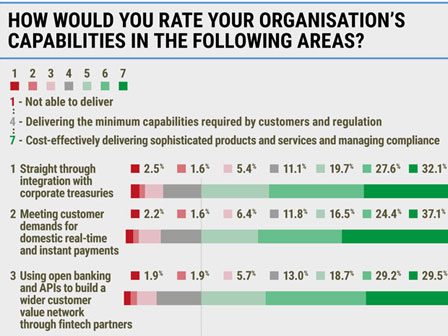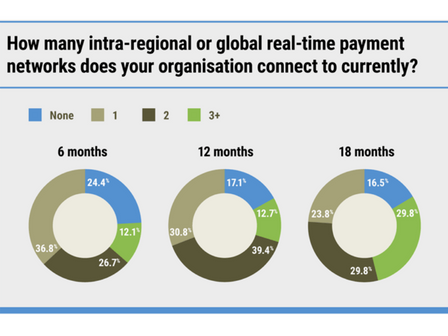
The results of Payments Modernisation: The Big Survey, conducted by Finextra Research and Volante Technologies, have provided myriad insights into the state of payments modernization around the world, including in Europe’s Benelux region.
In this blog, we’ll explore what the survey reveals about how Benelux banks approach payments modernization, highlighting strengths and weaknesses related to everything from ISO 20022 readiness and infrastructure to relative speed to market and budgeting allocations.
Challenges in ISO 20022
One of the greatest challenges facing Benelux banks is compliance with the ISO 20022 messaging standard. In response to the survey, only 12% of respondents from the region reported high confidence in delivering cost-effective compliance for domestic clearing. This indicates that institutions in the Benelux region are among others across Europe who may have underestimated the full spectrum of challenges associated with ISO 20022 implementation, which has resulted in an urgent need to accelerate their efforts to meet requirements by November 2025.
Speed to market and infrastructure
However, while Benelux banks may be lagging in the realm of ISO 20022 compliance, they also significantly outperform their European neighbors in terms of speed to market. More specifically, 54% of banks in the region say they can bring new services to market within six weeks or less, whereas that timeline can be met by only 28% and 29% of Southern European and Nordic banks, respectively.
Additionally, the survey shows that Benelux banks continue to boast a highly flexible and resilient infrastructure, containing a balanced mix of private clouds, data centers, and hybrid models, with 35% of respondents utilizing a multi-cloud approach. This trend suggests a strong, strategic relationship with cloud-based payment technologies and a keen understanding of their benefits related to scalability, cost efficiency, and security.
Security
When examining regional budgets for payment modernization in Europe, the Benelux region displays notably lower budget allocations compared to other areas. While 51% of European institutions plan to invest over $500,000, roughly two-thirds of Benelux banks intend to spend that amount or less. This indicates that despite their advanced financial infrastructure and strong economic standing, banks in the region lag behind their peers in other countries when it comes to the allocation of funds toward system upgrades.
The Benelux approach to modernization
Overall, although spending priorities are relatively balanced throughout Europe, the most pressing categories tend to vary by region. For example, whereas banks in Southern Europe are primarily focused on innovation and new customer value propositions, and the UK and Nordics are focused on deploying new technologies, respondents from the Benelux region are most concerned with significantly upgrading current systems and processes.
Importantly, Benelux banks aren’t alone here. Their top priority also consistently ranks second across the continent, indicating that the entire European financial services industry continues to prioritize modernization, either by improving current infrastructure or extending it with more modern components.
Interested in learning more about payments modernization trends in the Benelux region? Download your copy of the full report today.






